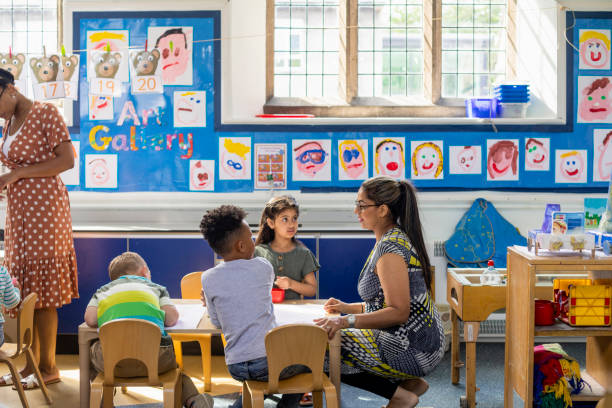There is something timeless and universal about storytelling. Long before classrooms and whiteboards, humans gathered to share tales that taught lessons, sparked imaginations, and connected communities. For young children, stories remain one of the most powerful tools educators have to nurture language, empathy, and curiosity.
In nursery settings, storytelling isn’t just an enjoyable ritual—it’s an essential part of early learning and development. Whether it’s reading picture books aloud, inventing group tales, or acting out adventures with puppets, stories help little ones make sense of the world and discover their place in it.
Let’s explore how stories can teach, comfort, and inspire in early years education.
Stories as Teachers
At its core, storytelling is a natural way to introduce ideas and skills. When children listen to stories, they build foundational language abilities—like vocabulary, sentence structure, and comprehension. Rich, descriptive books expose them to words and concepts they might not encounter in everyday conversation.
But the benefits go far beyond literacy. For example:
- Problem-Solving: Characters in stories face challenges and model creative solutions.
- Social Skills: Tales about friendship, sharing, and kindness help children learn how to get along.
- Cultural Awareness: Folk tales and stories from around the world teach children to appreciate diversity and respect differences.
At the best nursery ealing, educators often weave stories into every aspect of the day, using them to introduce new topics and spark discussion.
Stories for Comfort and Connection
Stories also have a unique power to soothe and reassure. During times of change—like starting nursery or moving house—a familiar story can help a child feel safe. The predictability of favourite books provides a comforting anchor in a world that sometimes feels overwhelming.
Simple rituals, such as a daily storytime after lunch or before going home, give children a sense of rhythm and security. When a teacher reads with warmth and enthusiasm, children feel valued and connected.
Some nurseries create special story corners with soft cushions, cosy lighting, and a rotating library of books. These spaces invite children to slow down, snuggle up, and enjoy quiet moments of reflection.
Stories to Inspire Imagination
Imaginative thinking is at the heart of learning—and stories are the spark that ignites it. When children hear tales of magical lands and brave explorers, they begin to dream bigger and invent their own narratives during play.
Open-ended storytelling, where teachers and children create stories together, empowers young learners to:
- Develop confidence in expressing ideas
- Practise turn-taking and listening
- Explore feelings and pretend scenarios in a safe way
This is why the best nurseries in ealing prioritise storytelling not just as an activity but as a way to inspire wonder, curiosity, and creativity every single day.
Bringing Stories Home
Parents can extend the magic of storytelling beyond the nursery gates. Here are a few ways to nurture a love of stories at home:
- Read together every day, even if only for ten minutes.
- Let your child choose books that match their interests.
- Make up stories at bedtime, taking turns to add to the tale.
- Use props like puppets or soft toys to bring stories to life.
By making stories a regular part of family life, you’ll help build language skills and a lasting bond.
Conclusion: The Gift of Storytelling
Stories are more than entertainment. They are tools for learning, comfort, and inspiration. When children grow up surrounded by rich language and meaningful tales, they develop empathy, resilience, and a lifelong love of reading.
In the nursery classroom and beyond, “Once upon a time” is the start of something powerful: confident, curious learners who see endless possibilities in every page.


















